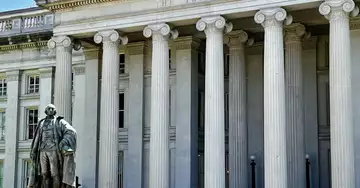The sudden meltdown of an investment firm or money market fund often prompts U.S. government officials to act, with regulators meeting for urgent discussions to decide whether and how to intervene. When one of the crypto world's major stablecoins - TerraUSD (UST) - slid into disaster this week, it triggered no such meetings.
Despite the federal government's recent stance that stablecoins could pose an increasing threat to the U.S. financial system, the Financial Stability Oversight Council (FSOC) has not met to weigh UST's potential dangers, according to two people familiar with the situation. Although the body of agency leaders has yet to meet as a group, the Treasury Department and top financial regulators are watching the crash of the dollar-linked algorithmic stablecoin, which sold for a quarter on Wednesday.
The situation was even mentioned by U.S. Treasury Secretary Janet Yellen in a Senate hearing Tuesday. Yellen, who heads the FSOC, said the token is experiencing a run that "shows it's a fast-growing product and there are risks to financial stability."
A Treasury spokesman declined to comment on internal discussions about UST.
Stablecoins pegged to the dollar - the core assets whose constant values are meant to allow investors to reliably trade in and out of more volatile cryptocurrencies - typically stick to the price of a dollar, much like money market funds promise to return at least a dollar for every dollar invested (though unlike stablecoins, they additionally offer a small return over time).
When the Reserve Primary Fund "broke the buck" in the 2008 financial crisis, the implosion of a major money market fund was a doomsday event that sent the financial world into a panic. It ended up sliding as low as $0.97 per share, although the failed fund eventually returned about $0.99 to its investors after government intervention.
There are two important reasons that UST's plight did not force a government response: the relatively small size of the industry and the fact that oversight is so undefined. Federal officials have routinely stated that the stablecoin market - currently worth $173 billion, according to coinmarketcap.com - is still very small compared to other markets overseen by agencies such as the Securities and Exchange Commission and the Commodity Futures Trading Commission. And regulatory oversight of the industry remains an open question, leaving federal officials unclear about its reach.
Even if regulators wanted to intervene in the face of billions in losses by UST users, it is uncertain which of them would have the authority to protect investors. And unlike regulated investments that are protected by the government, such as Securities Investor Protection Corporation (SIPC) insurance, there is no such protection for those who put their money in USTs, which have reached a peak of $18 billion.

